What is an Imperial line product? Well, the original RailKing line was focused on providing trains for hobbyists with more limited space or wishing to run on tighter-radius track. While they had quality construction, many locomotives were shrunk to fit O-31 or even O-27 operation.
As time has passed, more O scale tooling has been added to the line. Now, the Imperial sub-category covers large locomotives with more detail, but that have not been reduced to Lilliputian size as a result. The Imperial Electro-Motive Division SD70ACe fits this description.
The outfit
The long name for this is the SD70ACe Diesel R-T-R Deluxe Freight Train Set with ProtoSound 3.0. Whew! What this product is, is a starter set. For the newbie, this train set comes complete with everything you’ll need to get up and running. It features a RailKing Imperial line SD70ACe diesel locomotive, a gondola with crate load, a tank car, and a caboose, all in BNSF colors. It also includes a loop of MTH RealTrax, a power block, a receiver station, and a handheld unit for basic Digital Command System operation. Let’s take a look at the components of the set.
Locomotion
The frame is 15¾ inches long, which works out to approximately 63 feet in O scale. The real SD70ACe is a bit more than 74 feet long, so there is some compression in the design but it isn’t crazy.
The design has a good mix of cast-in and add-on detail, such as multiple-unit cables and air-brake lines on the pilot as well as an add-on uncoupler arm.
On the nose, there’s a mix of cast-in grab irons on the brakeman’s side and five add-on irons on the top of the nose and the four downward angling sections.
Two sand-fill caps are located on the nose, and a third is on the top of the opposite end of the model. On the forward deck you’ll find add-on ditch lights.
The cab has crewmen, wiper arms on the windows, and a headlight/number board above the windshield.
The shell has well-executed cast-in details, such as hinges, latches, doors, and louvers, that are right up there with what you see on a Premier line model. You’ll find see-through vents behind the cab and at the rear of the shell.
The overhanging radiator wings are see-through as well. Worth noting is that the radiator wings lift off to provide access to the DCS/DCC, smoke, and volume controls. Just lift it off and then snap it back into place.
The rear has cast-in grab irons and handrails, and you’ll find an add-on brake wheel on the engineer’s side.
The handrails on the sides and ends are metal. Roofline detailing includes an air conditioner and a round GPS/radio antenna housing, simulated lift rings, and an elaborate air horn.
The exhaust fans atop the wings are cast in and painted black, but you can see subtle impressions that represent fan blades.
The locomotive’s paint scheme was an excellent rendition of the BNSF’s design. Paint application and detail lettering were first-rate. Paint was evenly sprayed, and the accent lines were sharp.
On the test track, performance mirrored that of the RailKing SD70ACe we tested in the November 2012 issue.
The conventional low-speed average was 3 scale miles per hour, and the command low-speed average was 2.9 scale miles per hour. The diesel’s high-speed average was 70 scale miles per hour, and the drawbar pull was 2 pounds, 14 ounces.
The fan-driven smoke unit really pumped out the haze, and the sound suite was outstanding. There was a nice rumble to this baby when starting up and rolling along. All the DCS features, such as remote coupler operation, performed flawlessly.
The rolling stock
The outfit has three cars: a gondola, a tank car, and a caboose.
All the cars have die-cast metal trucks and operating couplers, features that place them a notch or two ahead of some starter-set models with somewhat flimsy plastic trucks.
The last thing anyone, newbie or veteran, needs is for plastic side frames to start breaking. That’s because repair is certainly beyond the skill set of most novice and experienced three-railers.
The gon: Probably the most traditionally sized car is the gondola, which is roughly 10 inches in length. It has average cast-in detail and comes with two large simulated wood crates for the cargo load. There are black foam inserts for holding the crates in place, but these can easily be removed along with the crates for you to ship cargo your way. It is a simple car that is well executed, and it fills the bill for providing set owners with a car they can load with whatever items they have handy.
The tanker: The tank car appears to be a modern 16,000-gallon single-dome model. The rig has smooth sides with prototypical seam detail. Each end has grab irons running the width of the car, no doubt to facilitate the switching crew’s special handling that a car containing potentially volatile cargo needs.
The car has ladders running up both sides of the center, and there are safety rails on top of the tank for crew safety when connecting hoses to fill or empty the car. The topside deck is nicely detailed. The car’s overall length is 11 inches.
Decoration is simple: orange and black with the BNSF swoosh loco. I’m not sure if BNSF owns any general-service tank cars like this. They may have some for hauling company fuel oil, but that really doesn’t matter because the car looks good!
The Shanty: The queen of this rolling stock consist is the caboose. Just about anyone will recognize this as the body style known as the Southern Pacific-type caboose, but the general body appearance can be found on many real railroads and in dozens of road names from N through G gauges.
The caboose is illuminated, and the car has frosted window panes that allow the light to be seen but obscure the view of a naked bulb.
Some readers may champ at the bit to point out that this locomotive is from a largely cabooseless era. Yes it is. But an interesting design element is that the caboose is painted white and has Operation Lifesaver graphics, and so can pass as a public safety car of sorts. The car has a round BNSF circle-and-cross herald, but the nomenclature on the side identifies it as originally being a Santa Fe caboose.
Paint and decoration of all the cars were good, and all the lettering was clean and crisp.
Start your trip
The O gauge SD70ACe Diesel R-T-R Deluxe Freight Train Set from MTH is a good way to begin your tinplate journey, but with more modern train locomotion. While your layout may evolve and expand, I’ll bet this locomotive remains in your active fleet for a long time!





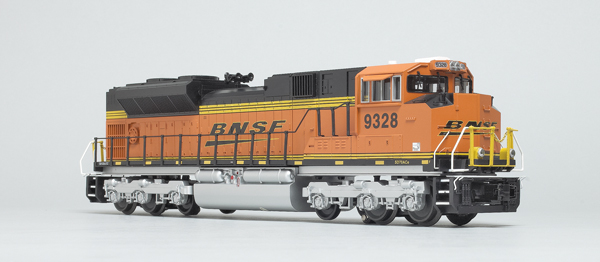

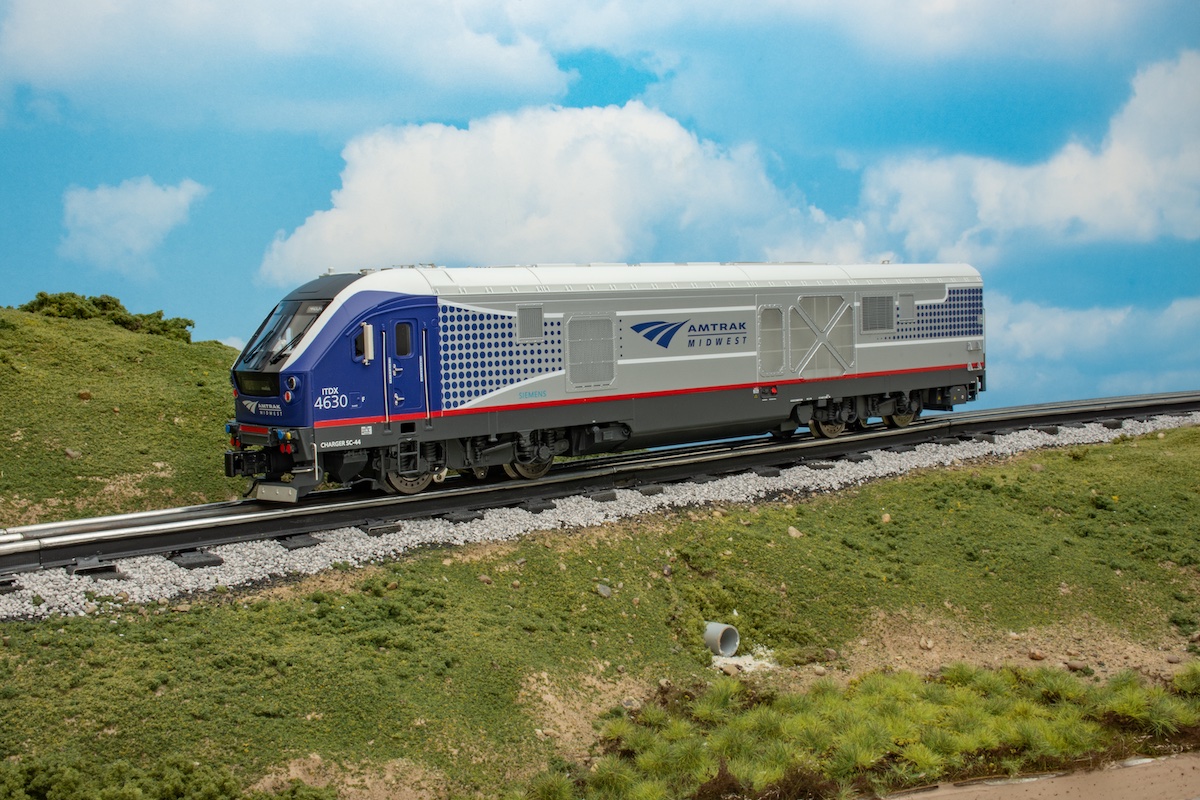
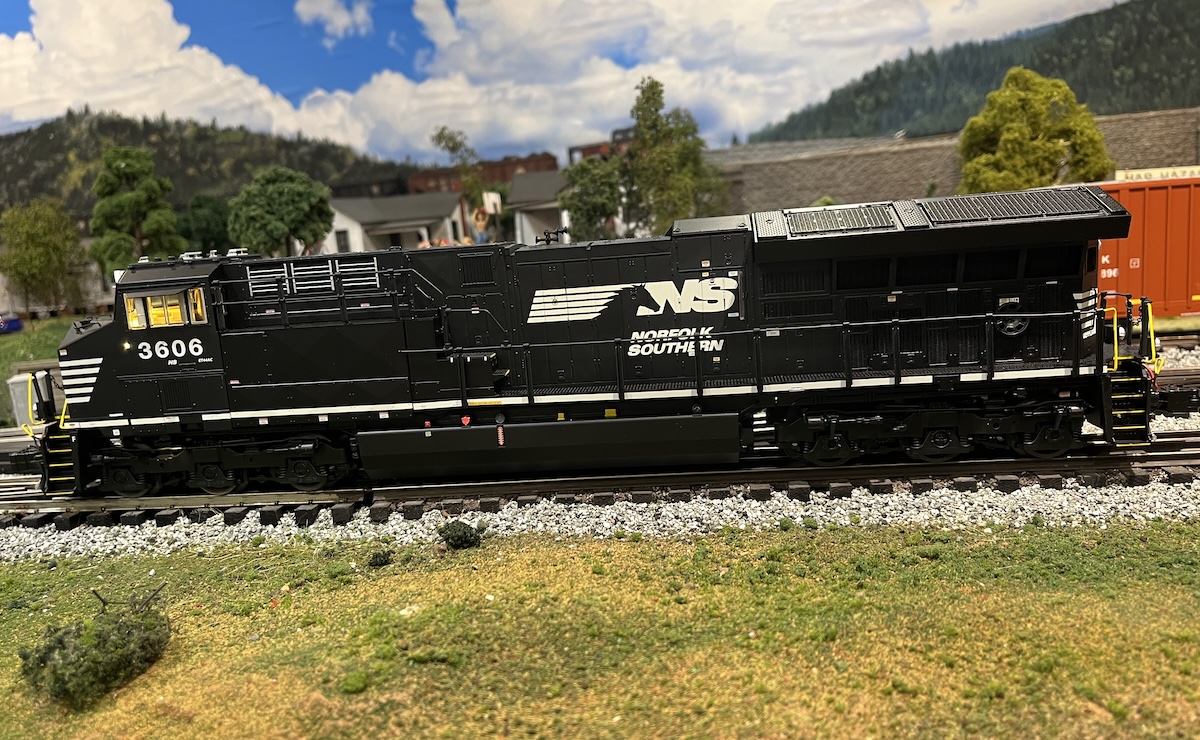
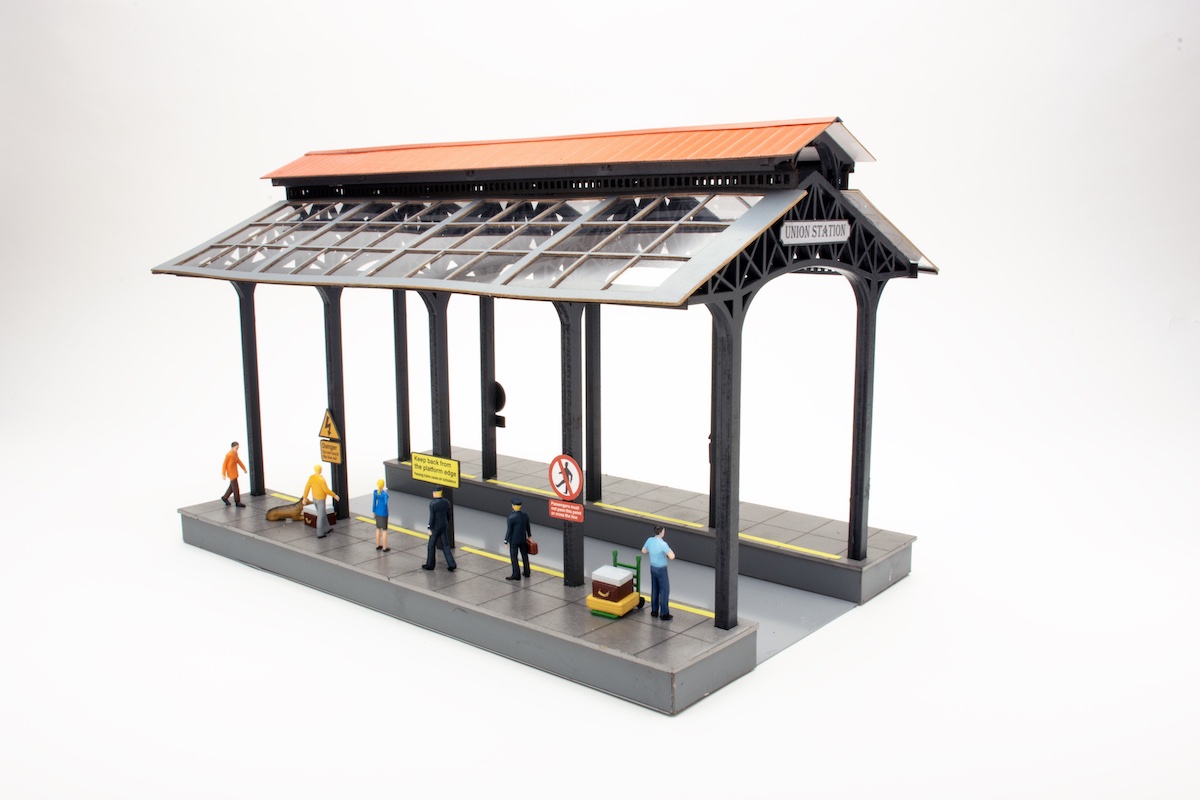
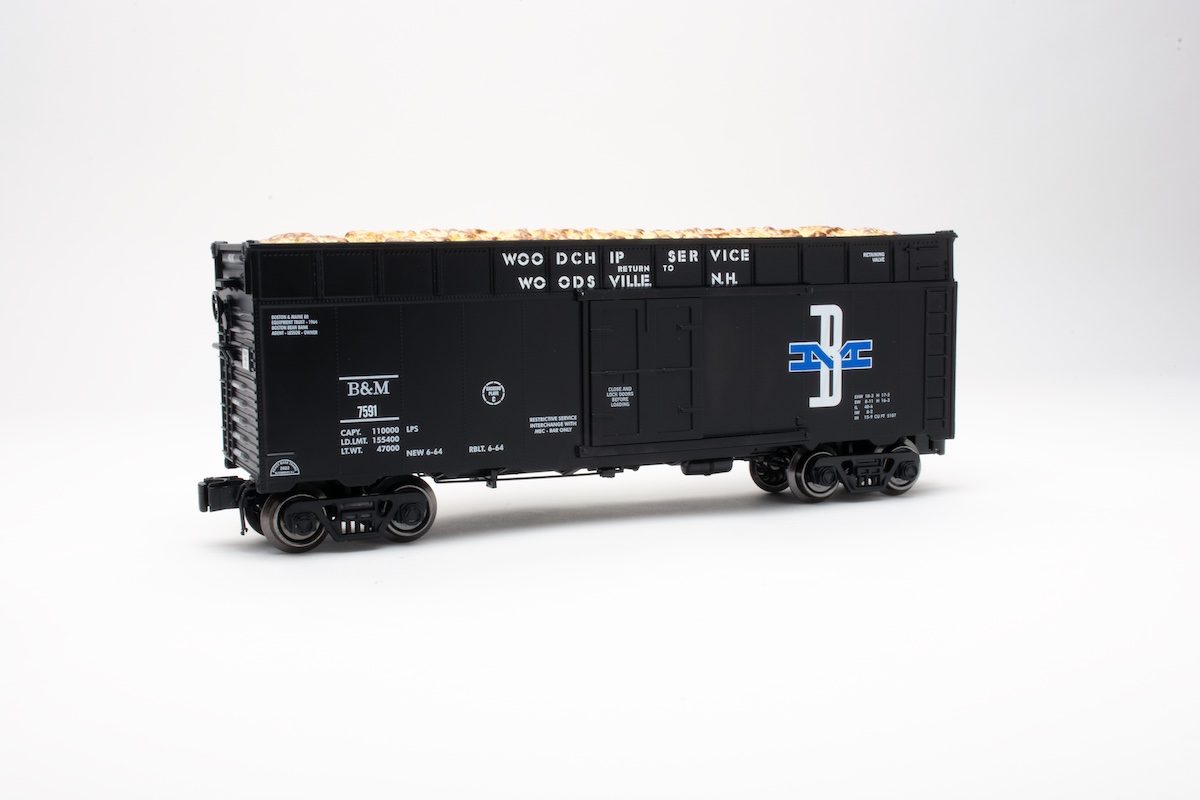




I’m new kid on the block. Not a comment but a question. I have the Lionel O gauge 3 rail Fastrack system with 036 curves. I was reading and watching the review of the MTH O gauge( # 30-4220) SD70ACe (with BNSF livery) Diesel R-T-R Deluxe Freight Train Set. Since this set has different power-up components, will this work with my track system? Thank you for your help!